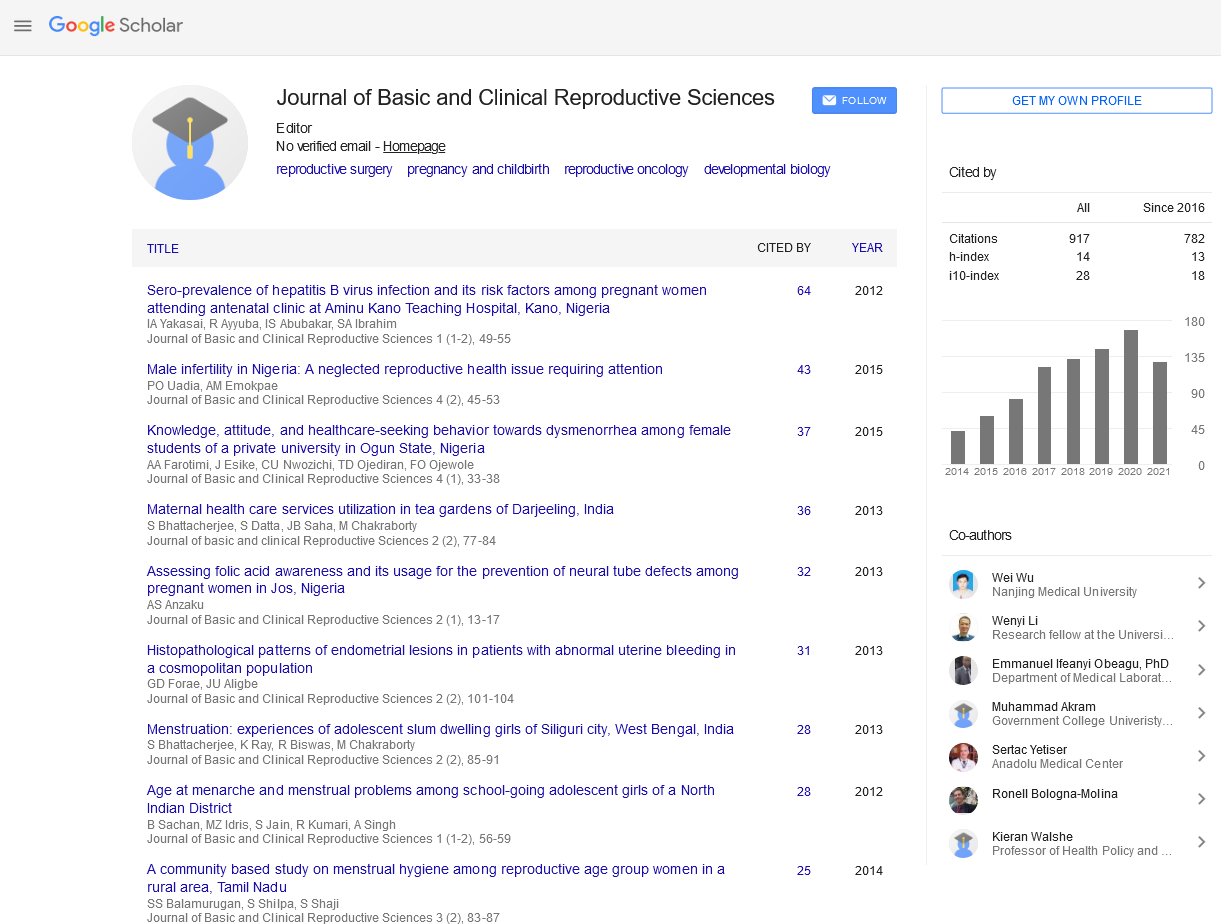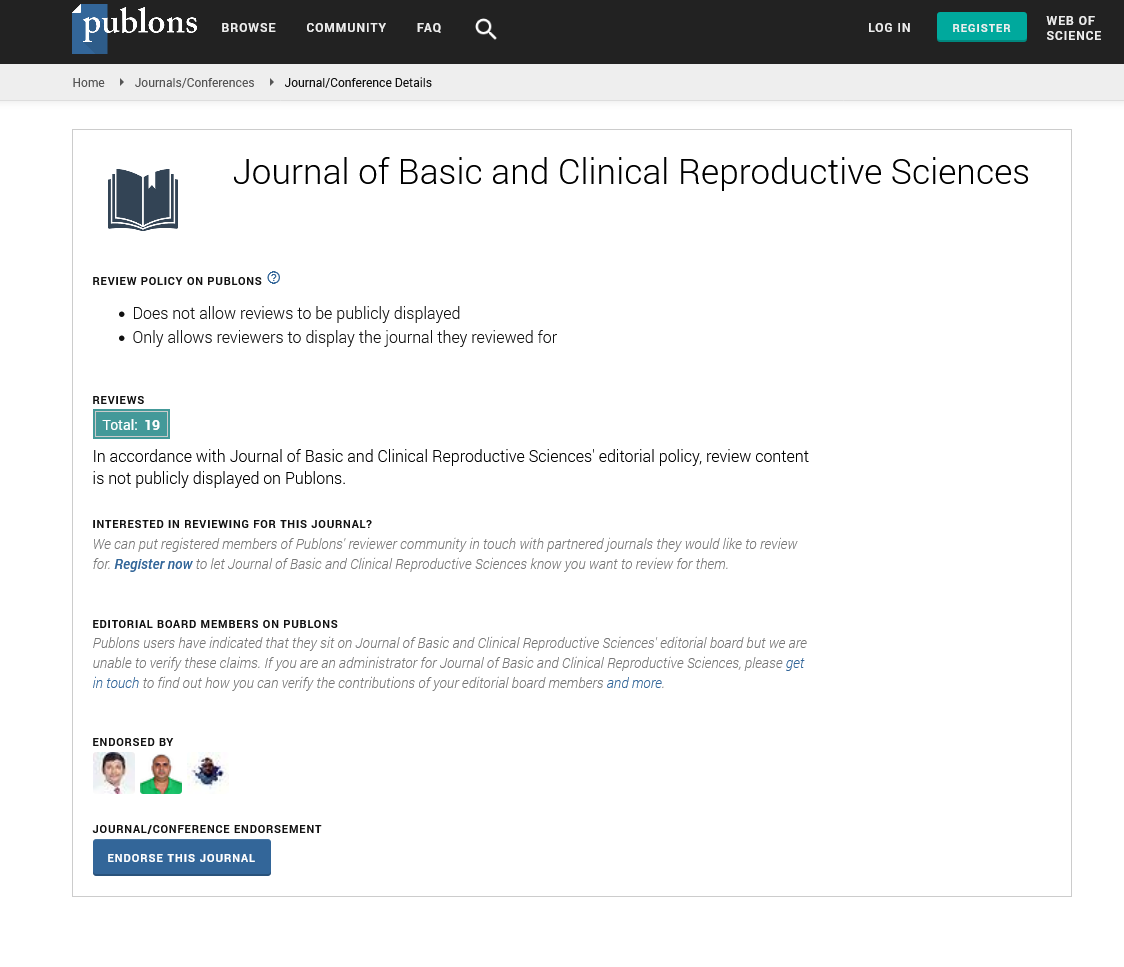Commentary - Journal of Basic and Clinical Reproductive Sciences (2022) Volume 11, Issue 3
Nephritic Syndrome is a Rare Disease of Glomerular Filtration
Received: 25-Feb-2022, Manuscript No. JBCRS-22-62193; Editor assigned: 28-Feb-2022, Pre QC No. JBCRS-22-62193 (PQ); Reviewed: 11-Mar-2022 QC No. JBCRS-22-62193; Revised: 21-Mar-2022, Manuscript No. JBCRS-22-62193 (R); Published: 28-Mar-2022, DOI: 10.36648/ 2278-960X.11.3.012
This open-access article is distributed under the terms of the Creative Commons Attribution Non-Commercial License (CC BY-NC) (http://creativecommons.org/licenses/by-nc/4.0/), which permits reuse, distribution and reproduction of the article, provided that the original work is properly cited and the reuse is restricted to noncommercial purposes. For commercial reuse, contact reprints@pulsus.com
Description
Nephritic syndrome is a rare disease of glomerular filtration barrier failure causing massive urinary excretion of protein, that can progress to chronic kidney disease and end-stage renal disease NS is a heterogeneous disease, so we use the histologic descriptions of glomeruli on kidney biopsy to diagnose individuals with "minimal change disease" and "focal segmental glomerulosclerosis." Additionally, we use an individual's response to these treatments to give them a post hoc diagnosis of steroid-sensitive NS or steroid-resistant NS. Understanding how human genetic variation contributes to the development and progression of NS has been a fruitful strategy in gaining a more precise understanding of the molecular underpinnings of NS. More than 50 genes have been discovered that harbour rare variants sufficient to cause SRNS ("Mandolin" NS). Through genome-wide association studies and exude-chip studies, common genetic variants have been discovered that contribute to the pathogenesis of FSGS, pediatric SSNS, and membranous nephropathy. Rare variant association studies in FSGS have implicated a small set of genes harbouring an increased burden of rare, deleterious variants. We are challenged to discover additional forms of NS-associated genetic variation to gain biological and clinical insights.
Expression quantitative trait loci studies, which use mRNA expression as a proximal (and continuous) cellular end phenotype, have increased power for the discovery of statistically significant genetic effects as compared to GWASs and provides inherent biological meaning in the associations between a regulatory variant and its associated gene The Get project has generated data which is publicly available and has been used extensively to help interpret GWAS signals emerging from other complex traits. Meaningful eat discoveries using the affected tissues in other human diseases suggest their potential for NS genomic discovery as well. This is appealing given that we often obtain kidney tissue via biopsy from affected individuals. With regards to kidney eQTLs, the final release of Get will have only 73 kidney cortex samples. There is also an absence of any other major public kidney eQTL datasets. This represents a significant barrier for genomic discovery in nephrology.
Most Comprehensive Kidney Eqtl Study
The most comprehensive kidney eQTL study thus far discovered those using unaffected portions of 96 nephrectomy samples from The Cancer Genome Atlas. The investigators integrated these eQTLs with risk loci for CKD to establish links between these risk alleles and molecular mechanisms limitation of this study was that bulk renal cortex was used for association, which is known to be 80% proximal tubule cells. The preponderance of this cell type may obscure eQTL signals emerging from the structurally and cellular heterogeneous kidney. This study also exclusively used healthy tissue, which prevents an opportunity to potentially discover disease-context-specific eQTL effects. Micro dissecting bulk renal cortex tissue into its two main functional structures, the glomerulus and tubulointerstitium, allows increased specificity for kidney transcriptomics studies. For instance, targeted GLOM and TI eQTL studies have led to discoveries of the transcriptomic impact of diabetic kidney disease GWAS alleles in individuals with diabetic nephropathy. In an NS GLOM eQTL study of A Lipoprotein L1 (APOL1), ubiquitin D (UBD) was significantly up regulated in individuals with a High-Risk (HR) APOL1 genotype. These findings were subsequently followed up in an admixture mapping study that identified enriched African ancestry at the UBD locus in people with a HR genotype and FSGS versus no FSGS and protective effects of UBD expression on the viability of cells overexpressing APOL1 risk variants, providing additional support for UBD's involvement in APOL1-attributed NS.
Nephritic Syndrome is A Frequent Cause of Chronic Kidney Disease
Steroid-resistant nephritic syndrome is a frequent cause of chronic kidney disease almost inevitably progressing to end-stage renal disease. More than 58 monogenic causes of SRNS have been discovered and majority of known steroid-resistant nephritic syndrome causing genes are predominantly expressed in glomerular monocytes, placing them at the center of disease pathogenesis. Herein, we describe two unrelated families with steroid-resistant nephritic syndrome with homozygous mutations in the KIRREL1 gene. One mutation showed high frequency in the European population (minor allele frequency 0.0011) and this patient achieved complete remission following treatment, but later progressed to chronic kidney disease. We found that mutant KIRREL1 proteins failed to localize to the monocyte cell membrane, indicating defective trafficking and impaired podocytes function. Thus, the KIRREL1 gene product has an important role in modulating the integrity of the slit diaphragm and maintaining glomerular filtration function.
Nephritic syndrome is the most common glomerular disease in children. There is wide variation in the incidence of nephritic syndrome in different populations, with a higher incidence in children of South Asian descent. However, nephritic syndrome with a more indolent course and poor prognosis is more common in African American children. The disparity in the prevalence and severity of nephritic syndrome is likely due to complex interactions between environmental and biological factors. Recent advances in genome science are providing insight into some of the biological factors that may explain these disparities. For example, risk alleles in the gene encoding Apo lipoprotein L1 (APOL1) have been established as the most important factor in the high incidence of chronic glomerular diseases in African Americans. Conversely, the locus for childhood steroid-sensitive nephritic syndrome in the gene encoding major histocompatibility complex-class II-DQ-alpha 1 (HLA-DQA1) is unlikely to be the explanation for the high incidence of steroid-sensitive nephritic syndrome in Asian children because the same variants are equally common in whites and African Americans. There is a need for collaborative large-scale studies to identify additional risk loci to explain disparities in disease incidence and response to therapy. Findings from such studies have the potential to lead to the identification of new therapeutic targets for nephritic syndrome. There is limited information on effective disease monitoring for prompt interventions in childhood nephritic syndrome. We examined the feasibility and effectiveness of a novel text messaging system for disease monitoring in a multicentre, prospective study. One mutation showed high frequency in the European population (minor allele frequency 0.0011) and this patient achieved complete remission following treatment, but later progressed to chronic kidney disease. We found that mutant KIRREL1 proteins failed to localize to the monocyte cell membrane, indicating defective trafficking and impaired monocytes function. Thus, the KIRREL1 gene product has an important role in modulating the integrity of the slit diaphragm and maintaining glomerular filtration function.


